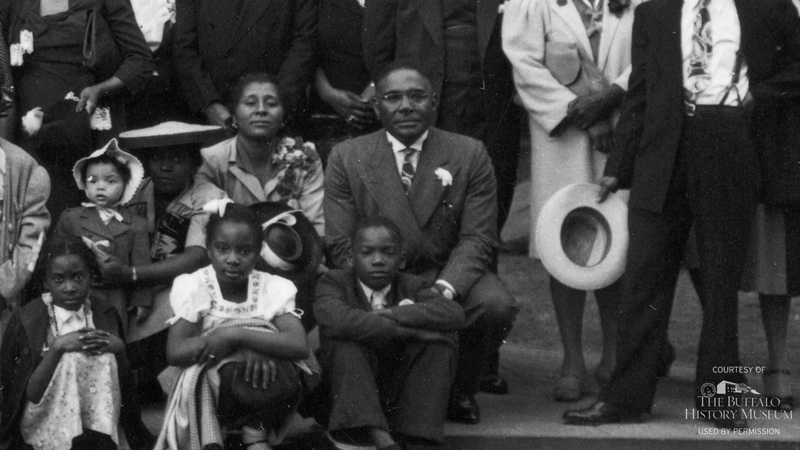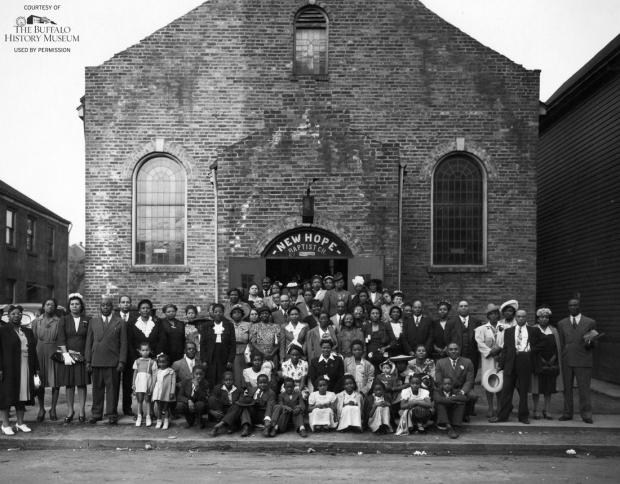Looking Backward: New Hope Baptist Church, 63 Union Street
New Hope Baptist Church, 63 Union Street, was a cornerstone of African-American life in the Ellicott District, the Lower East Side neighborhood leveled as part of New York State’s first federally funded urban renewal project. In this undated photograph by Hauser Bob, some of the church’s 600 parishioners stand outside its second house of worship, built in 1933 around the modest frame structure it originally occupied in 1926. Reverend Nathaniel A. Mason, native of Advance, North Carolina, organized the church, was its pastor from 1928 to 1962, and is pictured at the lower right with a flower in his lapel.

The church was built with resourcefulness—the design by deacon William Stewart, construction by unemployed parishioners, bricks recycled from the demolished Mansion House at Main and Exchange streets. “The House of God must go on in spite of the depression,” was the slogan of Reverend Mason. In 1959 and 1960, the Board of Redevelopment seized and razed nearly every building on the 29 blocks between Michigan Avenue, William Street, Jefferson Avenue, and Swan Street. To private interests pushing the Ellicott Redevelopment Project, the objective was clear. “It’s a colored slum of the worst kind,” said an unnamed Buffalo bank executive in an April 7, 1958, article in the Wall Street Journal, “and just a stone’s throw from our best business district.” The Ellicott District, New Hope Baptist Church, and Union Street, which ran from Eagle to William streets, were erased by 1960. After the Board of Redevelopment declined to provide a site for New Hope Baptist in the neighborhood, the congregation moved to a church building at Richmond Avenue and Breckenridge Street, purchasing it in 1961. Leaving the neighborhood was “a hard decision,” according to Reverend Mason. “We didn’t want to do it, but we had to.”
Image courtesy of The Buffalo History Museum. Used by permission.

